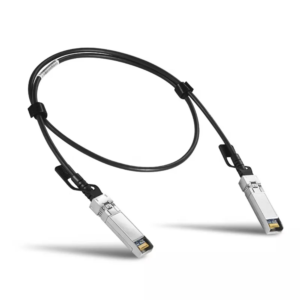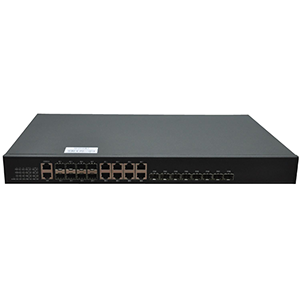Fiber amplifiers play an important role in fiber-optic communication systems. This article will explore the working principles of fiber amplifiers. We will first define the structure and composition of fiber amplifiers and explain their role in fiber-optic systems. Next, we will analyze the working principles of fiber amplifiers in depth, including light excitation and stimulated emission, inverted colony, optical pumping, spectral characteristics, gain and bandwidth, etc.
We will explain how these physical processes achieve the amplification of optical signals and explain the balance and optimization between different parameters. Subsequently, we will introduce the main types of rare-earth-doped fiber amplifiers and Raman fiber amplifiers, and compare their characteristics and applicable scenarios. Finally, we will analyze the application of fiber amplifiers in fiber-optic systems such as long-distance transmission, signal relay, DWDM, and optical switching.
Basic concept of fiber amplifier
Let me introduce you to the basic concept of fiber amplifier:
Structure and composition of fiber amplifier:
Fiber amplifier is an optical device that directly amplifies optical signals, mainly composed of the following parts:
- Doped fiber – the core part of light amplification using rare earth doping
- Optical pump source – provides energy pumping to excite doped fiber to achieve gain
- Wavelength division combiner – couples pump light into doped fiber
- Optical isolator – prevents reverse signal from interfering with the light source
These components work together to form a complete fiber amplifier system.
The role of fiber amplifiers in fiber systems:
Fiber amplifiers play an important role in fiber communication and sensing systems:
(1) Signal amplification
- Can directly amplify optical signals without photoelectric conversion
- Overcome the attenuation during fiber transmission and extend the transmission distance
(2) Noise optimization
- While amplifying the signal, some noise components will also be amplified
- Through optimized design, the noise level can be minimized
(3) Power boost
- Can amplify weaker optical signals to the required power level
- Meet the optical power requirements of optical communication, optical sensing and other applications
(4) Wavelength transparency
- Light signals of different wavelengths can be amplified by the same amplifier
- Achieve wavelength-transparent light signal gain function
(5) Integration
- The fiber amplifier has a compact structure and is easy to integrate into the fiber system
- Reduces the size and power consumption of the system
In short, the fiber amplifier is an indispensable key component in the fiber communication and sensing system. It can achieve efficient amplification of optical signals and play an important role in extending the transmission distance and improving system performance.
How fiber amplifiers work
Let me give you a detailed introduction to how fiber amplifiers work:
Light excitation and stimulated emission:
- Fiber amplifiers use the light excitation and stimulated emission of rare earth ions in doped optical fibers to achieve amplification
- The incident light signal can stimulate the rare earth ions to transition from the ground state to the excited state
- Then these excited state ions will transition to the ground state through the stimulated emission process
- The released and incident Photons of the same frequency and phase are used to amplify optical signals.
Inverted grouping:
- Fiber amplifiers need to create grouping inversion of rare earth ions.
- Even if the number of excited ions is greater than that of ground state ions,
- It can ensure that stimulated radiation is greater than absorption during amplification.
- Common methods include optical pumping, electrical pumping, etc.
Optical pumping:
- Optical pumping
- By coupling a high-power pump light source into the doped fiber
- Excite rare earth ions to transition from the ground state to the excited state
- The choice of pump light source has an important influence on the performance of the amplifier
Spectral characteristics:
- The emission spectrum of the doped fiber is related to the energy level structure of the rare earth ions
- Different rare earth ion doping will produce different emission spectra
- Emission light Spectral characteristics determine the gain bandwidth of the amplifier
Gain and bandwidth:
- Fiber amplifiers have certain gain and bandwidth characteristics
- Gain and bandwidth usually have a certain trade-off relationship
- Need to balance and optimize according to actual application needs
In short, fiber amplifiers use light excitation and stimulated radiation processes, create a group inversion of rare earth ions, and use optical pumping to ultimately achieve the amplification function of optical signals. Its performance characteristics are jointly determined by parameters such as spectral characteristics, gain and bandwidth.
Main types of fiber amplifiers
Let me introduce you to the main types of fiber amplifiers and their characteristics:
Rare earth doped fiber amplifier:
- Use optical fiber doped with rare earth elements (such as erbium, ytterbium, thulium, etc.) as gain medium
- Reverse the grouping of rare earth ions through optical pumping to achieve light amplification
- Depending on the different doping ions, it can be divided into EDFA, YDFA, TDFA, etc.
- High gain, low noise Advantages such as, suitable for long-distance optical communication
Raman fiber amplifier:
- Optical amplification based on Raman scattering effect in optical fiber
- Raman scattering process in optical fiber is stimulated by high-power pump light
- Thus amplifying the input signal light
- Ability to amplify in any wavelength band, but the gain is relatively low
Brillouin fiber amplifier:
- Using Brillouin scattering effect in optical fiber Achieve amplification
- Brillouin gain is generated by exciting phonon oscillation through high-power pump light
- Unidirectional amplification can be achieved, but the gain and bandwidth are relatively small
Semiconductor optical amplifier:
- Using semiconductor materials as gain media
- Carrier group inversion is achieved through electrical pumping
- Small size, low power consumption, but poor gain and noise performance
Different types of fiber amplifiers have their own characteristics and are suitable for In different application scenarios:
- EDFA is widely used in C-band long-distance optical communication
- YDFA is suitable for near-infrared band communication and sensing
- Raman amplifier can achieve broadband amplification and is suitable for WDM system
- Brillouin amplifier is usually used for special sensing applications
- Semiconductor amplifier is used for small integrated optical circuits
In short, the reasonable selection of fiber amplifier type suitable for application requirements can provide the best amplification performance for the fiber system.
Application of fiber amplifiers in fiber systems
Let me introduce you to the main applications of fiber amplifiers in fiber systems in detail:
Long-distance optical transmission:
- Fiber will produce attenuation and dispersion during long-distance transmission
- Using fiber amplifiers can relay and amplify optical signals
- Overcome transmission loss and extend transmission distance
- EDFA is widely used in C-band long-distance transmission
Signal relay:
- In optical fiber communication systems, optical signals need to go through multiple relays
- Use optical fiber amplifiers as relay amplifiers
- Ability to amplify and regenerate optical signals
- Ensure that signal quality remains good throughout the entire transmission link
DWDM system:
- DWDM systems require simultaneous amplification of multiple wavelength channels
- Use Raman amplifiers or EDFAs with good broadband characteristics
- Can realize centralized amplification of DWDM signals
- Reduce system complexity and increase transmission capacity
Optical switching network:
- Optical switching networks require switching and convergence of optical signals at each node
- Use optical fiber amplifiers to amplify the switched optical signals
- Overcome the loss during optical switching and maintain signal quality
In short, optical fiber amplifiers play a key role in various optical fiber applications such as long-distance optical transmission, signal relay, DWDM system, optical switching network, optical sensing system, etc., and are an important supporting technology for achieving high performance and high reliability of optical fiber systems.
Summary
Optical fiber amplifiers play a key role in improving the performance and reliability of optical fiber communication systems. Our company has long been focusing on the research and development and production of optical communication equipment and its supporting products, and has rich industry experience. The optical fiber amplifier products we provide have reached the industry-leading level in terms of amplification performance, noise characteristics, working bandwidth, etc., and can meet your requirements for optical fiber system capacity and transmission distance.
Whether you are using fiber amplifiers in long-distance transmission, signal relay, DWDM, optical switching and other applications, we can provide you with professional selection services and technical support. At the same time, our engineering team will provide you with detailed installation and commissioning guidance and daily maintenance suggestions to help you give full play to the performance advantages of fiber amplifiers. Contact us now to learn more.
Fiber Optic Amplifier FAQ
A fiber optic amplifier is an active optical device that amplifies optical signals transmitted through a fiber optic cable, without the need for electrical-to-optical conversion.
The two most common types of fiber optic amplifiers are the Erbium-Doped Fiber Amplifier (EDFA) and the Raman Fiber Amplifier (RFA).
An EDFA uses a length of erbium-doped optical fiber, which is optically pumped by a laser, to amplify the input optical signal. The erbium ions in the doped fiber are excited by the pump light, allowing them to amplify the signal light.
The pump laser, typically operating at a different wavelength than the signal, provides the necessary energy to excite the erbium ions in the doped fiber, enabling the optical amplification process.
An RFA relies on the stimulated Raman scattering effect, where the pump light interacts with the silica material of the optical fiber, transferring energy to the signal light and amplifying it.
EDFAs rely on doped fibers and discrete pump lasers, while Raman amplifiers use the inherent properties of the fiber itself and distribute the pump power along the fiber length.
EDFAs typically operate in the 1550nm wavelength region, while Raman amplifiers can operate across a wider range of wavelengths. The gain provided by these amplifiers can range from tens of decibels to over 40dB.
Fiber optic amplifiers enable longer transmission distances, higher data rates, and improved signal-to-noise ratios by compensating for the signal attenuation in optical fibers.
Key factors include the choice of fiber type, pump laser power and wavelength, gain, noise figure, and the overall system integration with the fiber optic network.
Ongoing advancements include the development of hybrid amplifier designs, the integration of amplifiers with other photonic components, and the optimization of amplifier performance for specific applications.





